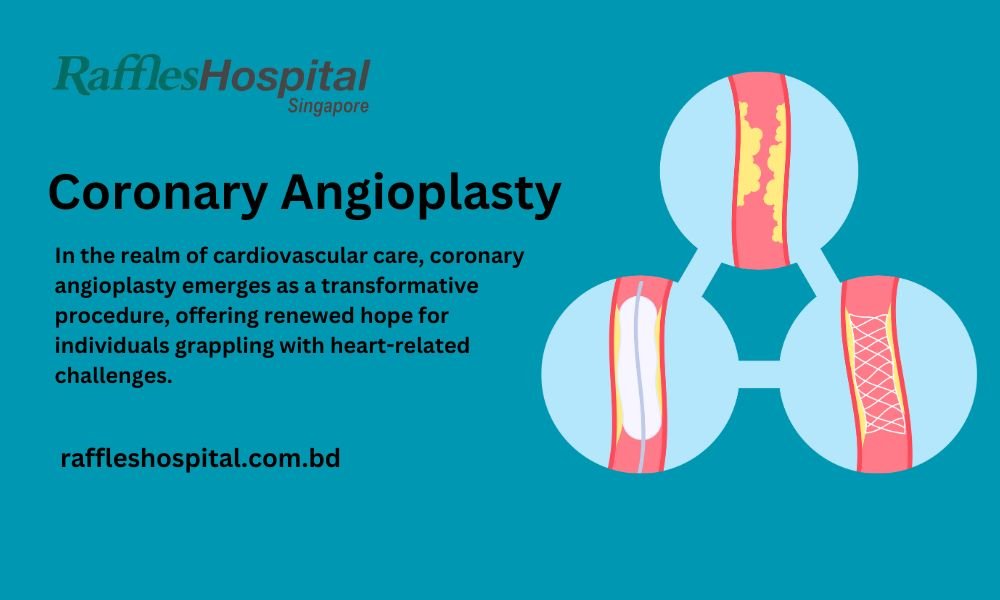In the realm of cardiovascular care, coronary angioplasty emerges as a transformative procedure, offering renewed hope for individuals grappling with heart-related challenges. This guide aims to unravel the intricacies of it, shedding light on its purpose, the procedure itself, and the impactful changes it brings to the lives of those seeking cardiac well-being.
Defining Coronary Angioplasty
Coronary angioplasty, often referred to as balloon angioplasty, is a medical intervention designed to open narrowed or blocked coronary arteries. These arteries, responsible for supplying oxygen-rich blood to the heart muscle, may face obstructions due to the buildup of plaque. It steps in as a solution, restoring blood flow and revitalizing the heart.
Understanding the Need for It
The necessity for it arises when individuals experience chest pain (angina) or are at risk of a heart attack due to restricted blood flow to the heart muscle. The procedure aims to alleviate these symptoms and prevent potential complications by widening the narrowed arteries.
How It Works
The mechanics of coronary angioplasty involve the insertion of a catheter with a deflated balloon at its tip into the narrowed artery. Once in place, the balloon is inflated, compressing the plaque against the artery walls and widening the passage for blood flow. In some cases, a stent—a small mesh tube—is placed during the procedure to help keep the artery open.

Coronary Angioplasty
The Coronary Angioplasty Procedure
Coronary angioplasty typically unfolds in a specialized cardiac catheterization laboratory. Local anesthesia numbs the entry site, often in the groin or wrist, where the catheter is inserted. Guided by imaging, the catheter navigates through blood vessels until it reaches the coronary arteries. The inflation and deflation of the balloon, coupled with potential stent placement, occur swiftly, allowing for a timely resolution of the arterial blockage.
Recovery and Lifestyle Changes Post-Coronary Angioplasty
Post-coronary angioplasty, individuals embark on a path of recovery and lifestyle modifications. The initial recovery period involves monitoring for potential complications, and most individuals can resume normal activities within a few days. Embracing heart-healthy habits, including a balanced diet, regular exercise, and medication adherence, becomes integral to sustaining the benefits of coronary angioplasty.
Potential Risks and Complications
While coronary angioplasty is generally safe, it is not without potential risks. Complications may include bleeding at the catheter insertion site, blood vessel damage, or an adverse reaction to the contrast dye used during the procedure. The prevalence of complications is relatively low, emphasizing the importance of skilled medical professionals overseeing the process.
Benefits of Coronary Angioplasty
The benefits extend beyond the immediate relief of symptoms. By restoring blood flow to the heart, the procedure reduces the risk of heart attacks, alleviates chest pain, and enhances overall heart function. Individuals often experience a notable improvement in their quality of life, reclaiming vitality and resilience.
Conclusion: Empowering Hearts Through Coronary Angioplasty
In the journey to heart health, coronary angioplasty emerges as a powerful ally, offering a pathway to revitalization and renewed vitality. Understanding the purpose, procedure, and potential changes post-angioplasty empowers individuals to make informed decisions about their cardiac well-being. As hearts are rejuvenated through the skilled hands of medical professionals, the narrative becomes one of resilience, hope, and the rekindling of a vibrant life.
FAQs about Coronary Angioplasty
Q: Is a permanent solution for blocked arteries?
A: While coronary angioplasty provides effective relief, ongoing lifestyle changes and medication adherence are crucial for sustaining the open arteries and preventing future blockages.
Q: How soon can I resume normal activities?
A: Most individuals can gradually resume normal activities within a few days after the procedure. Nonetheless, it is imperative that you heed the advice given by medical experts.
Q: Are there alternative treatments?
A: Depending on the individual’s condition, alternative treatments, such as coronary artery bypass grafting (CABG), may be considered. The choice is influenced by factors like the location and severity of arterial blockages.
Q: Can be performed on all patients with heart issues?
A: The suitability of coronary angioplasty depends on various factors, and not all individuals with heart issues may be candidates for the procedure. A thorough evaluation by healthcare professionals determines the most appropriate treatment approach.

